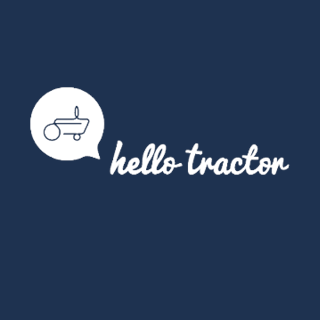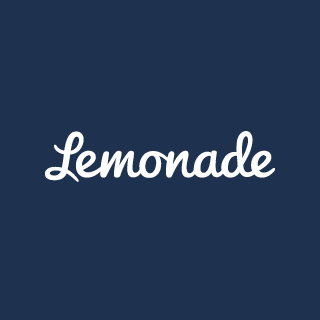Asset sharing in a nutshell
Status quo: Change-as-Usual
Sharing of assets across individuals and groups …
- Where the cost of costly assets is shared across users
- In the context of platform businesses, asset sharing unlocks value for multiple sides of the platform
- Increasing the chance of success by reducing the entry barriers to an industry
Future quo: Breakthrough
...while unlocking value across multiple dimensions
- Where value is created by maximising existing capacity and encouraging effectiveness over efficiency
- And where value is created across diverse domains from financial, to societal to environmental, both for the business and its value chain, as well as for non-traditional stakeholders
What is it?
Creating more value, using existing resources
Asset Sharing is not new – cooperatives are a key example of how communities have traditionally come together to pool resources and work collaboratively. But as an increasingly important element of new business models, asset sharing connects spare capacity and demand, allowing consumers access, rather than forcing ownership, of a product or asset.
Often referred to as the Sharing Economy, the idea gained traction thanks to a 2010 book by Rachel Botsman and Roo Rogers, What’s Mine is Yours: The Rise of Collaborative Consumption. They define the collaborative economy as a system that activates the untapped value of all kinds of assets through models and marketplaces that enable greater efficiency and access. An outline of related terms to the Sharing Economy can be found on Rachel Botsman’s website.
There is a growing diversity of Asset Sharing business models. Some of the common points of differentiation include:
MARKET-BASED ALTERNATIVE OR FREE TRANSACTIONS:
Some models enable demand-based pricing, such as Uber, with alternative models including that adopted by Yerdle, a P2P service for exchanging used goods
OPTIMIZATION OF RESOURCES, NEW OR USED:
Zipcar, for example, manages, and optimizes a fleet of newly acquired vehicles amongst a community of users, whilst other models such as BlaBlaCar (a ride-sharing platform) and Electrolux’s new ‘Uber-for-laundry’ programme optimize under-utilized resources amongst peers. This approach is known as Peer-to-Peer (P2P).
FROM P2P TO NEW TYPES OF B2B PLATFORM:
P2P models such as Airbnb have become synonymous with the Sharing Economy, whilst B2B (business-to-business) models are gaining traction – including FLOOW2, a new sharing marketplace allowing businesses to share business equipment.
CROWDSOURCING FINANCIAL, HUMAN, AND INTELLECTUAL CAPITAL:
Crowdsourcing models range from Massive Open Online Courses (MOOCs) such as Coursera and Udacity which pool intellectual capital from various education providers, whilst crowdfunding sites such as Kickstarter or schemes such as Nissan’s Get & Go car-sharing project are pooling financial capital across users in new and innovative ways.
What's driving it?
Digitalisation is lowering the cost to transact and share information
With the rise of the Internet and other forms of digital technology, information has become more readily available, and the cost of coordinating sharing activities has fallen. Such technology has been the critical driver in connecting users and enabling transactions to be completed online – and, often in the process, facilitating offline interactions as well.
Going forward, other technologies including the Internet of Things through the use of sensors, Autonomous Vehicles, Artificial Intelligence and Robotics, will enable more seamless sharing of assets based on capacity and needs.
What are the opportunities and risks?
Democratising access, and enabling a sustainable future
The sharing of assets both at the P2P and B2B level, can have a great impact on the environment, in terms of energy savings and waste reductions through the need for less products (or less journeys made) and through the lengthening of product lifespans (SDG 11 – Sustainable Cities and Communities, SDG 12 – Responsible Consumption and Production, and SDG 13 – Climate Action). At the same time, we need to balance the economic realities that cheaper accommodation or access to low-cost private transportation might enable – in terms of increased travel and reduced use of public transportation – both of which could result in higher carbon emissions.
Nonetheless, there is huge potential for Asset Sharing models to translate into positive societal impact in terms of democratising access to various assets we take for granted – in food production (SDG 2), health and other consumer products (SDG 3), education (SDG 4) and in other domains. Cities such as Seoul in South Korea are already tapping into this vast potential by designing and facilitating asset sharing in areas such as transportation and other public infrastructure (SDG 9) and by enabling the crowdsourcing of social services (SDG 10 – Reduced Inequalities).
Of course there will be unintended consequences. In asset sharing models such as Uber, for instance, the growing social inequalities between those who provide services, and those who consume services, and the shift in risks from companies to individual “microentrepreneurs”, will need to be addressed.
While policy makers have a clear role to play here, companies need to consider how they impact multidimensional forms of value. They will need to work out how to redistribute wealth more equitably, not just amongst shareholders (primarily financial capital), but across a broader range of stakeholders including full-time employees and those employed in the “gig economy” (both increasingly seen as forms of human capital). Companies will also need to find ways to foster participation and connectivity in communities (social capital) whilst being mindful of conserving the environment (natural capital).
Get started
How can companies engage?
- Explore your current asset base – are there any assets you currently own that could be shared?
- Can you better satisfy your customers by providing access to a product, without the need for them to own it?
- Is there potential for your business to facilitate new connections in the marketplace? Are there partners you can work with to enable this?








